Windows 2016 Server OS includes a lot of new features compared to Windows 2012R2 Server. Windows 2016 Server Failover Cluster Manager has many features but Virtual Machine Load Balancing to optimize the utilization of failover Cluster nodes seems to be one of the most exciting feature. The motive of this document is to help readers configure and control Cluster Failover Virtual Machine Load Balancing.
Virtual Machine Load Balancing identifies the High-Utilized Nodes and move the Virtual Machines to Under-Utilized Nodes without any downtime in the Virtual Machine.
Virtual Machines Load Balancing Calculates the nodes load based on following:
- Memory in use percentage and Memory are the most common important resources on the Hyper-V host
- CPU Utilization on the Nodes
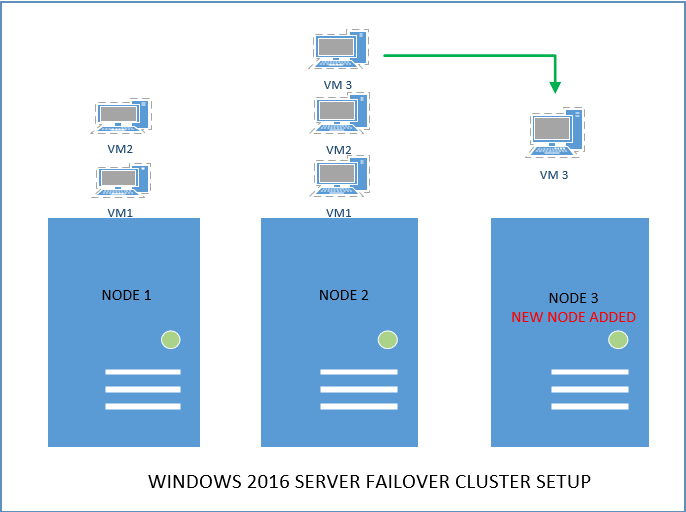
When you add a new Node on existing Cluster Failover setup, the Virtual Machine Failover feature automatically balances the capacity, from existing Nodes to newly added Node.
Load Balancing happens in following order.
- The pressure(Utilization) is noted on the existing Failover Cluster nodes
- All nodes of maximum threshold are identified
- The highest pressure(Utilization) of the nodes are identified to perform priority of balancing
- Virtual Machines are Live Migrated and there is no downtime
Controlling the aggressiveness of balancing:
The Aggressiveness of Load balancing is based on the Memory and CPU configuration using the Cluster common property “AutoBalanceLevel.” we need to run the below represented commands on PowerShell to control the aggressiveness of Load balancing.

| AutoBalancerLevel | Aggressiveness | Behavior |
|---|---|---|
| 1 (default) | Low | When the host is more than 80% loaded it is moved |
| 2 | Medium | When the host is more than 70% loaded it is moved |
| 3 | High | When the host is more than 60% loaded it is moved |
Controlling Virtual Machine Load Balancing:
Virtual Machine Load Balancing is enabled by default and Load Balancing is configured by the cluster in common property “AutobalanceMode”.
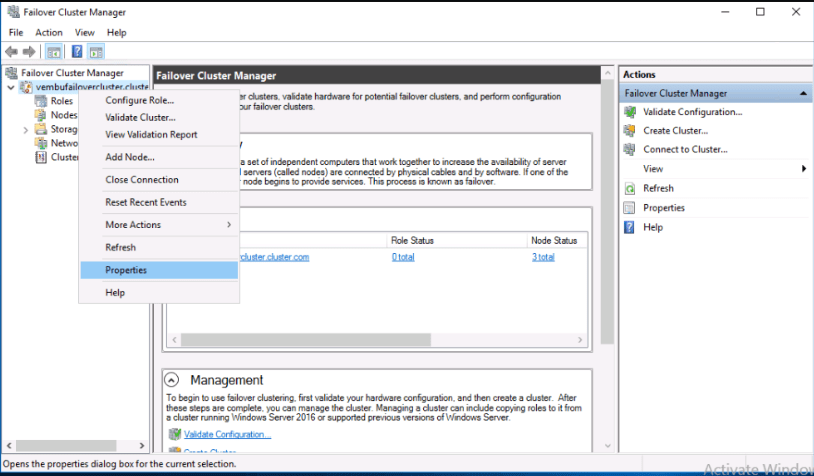
Right Click on the Cluster name and select the properties.
Go to Balancer tab and see the details, screen of which is attached below.
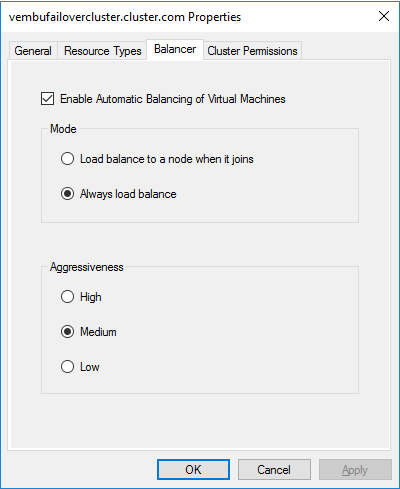
Please refer the following details for Virtual Machine Load Balancing.
3 NODES FAILOVER CLUSTER Setup for VM Load Balancing:
Details about Nodes failover cluster setup using Windows 2016 server.
Cluster Name: vembufailovercluster
Names of 3 Nodes: node2, node3 and node4
Names of VM : test, test1, test2, test3 and test4 and running as per below diagram.
Node2: test 3 VM running
Node3: test 1 and test 4 VMs are running.
Node4: test and test 2 VMs are running, refer below diagram.
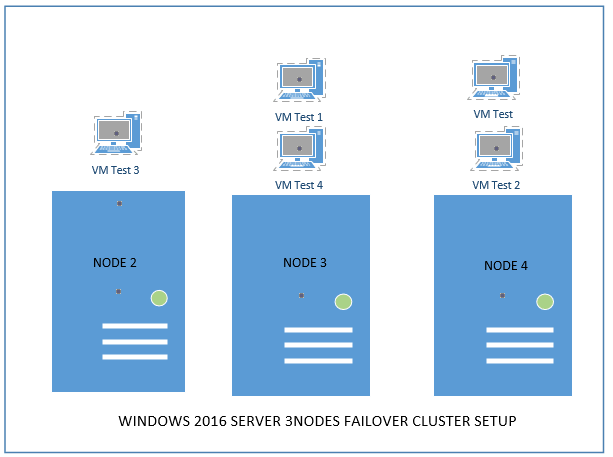
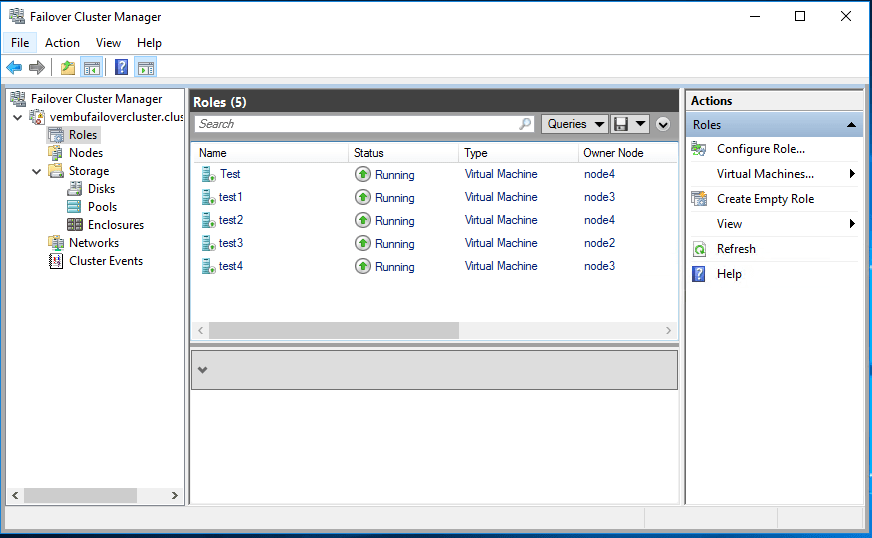
Load Balancing in Cluster setup.
Refer below diagram, New test5 Windows 2016 Server VM added on Node4.
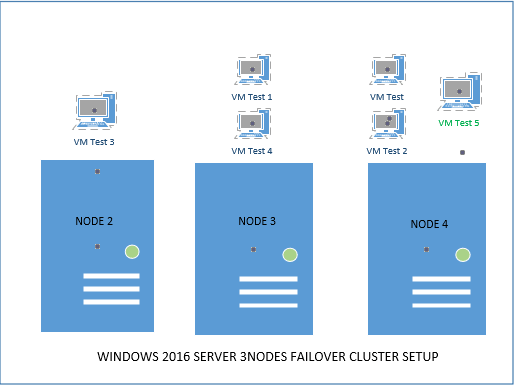
Test5 VM is Created on Cluster Manager, Owner of the Node is Node4 and VM status is not powered ON. refer below screenshot.
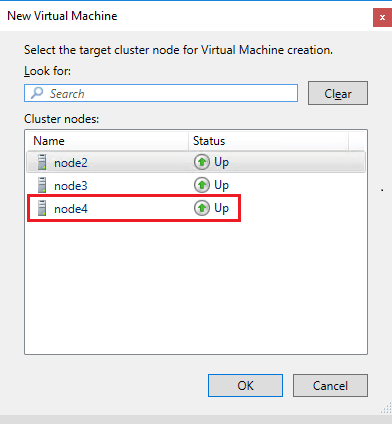
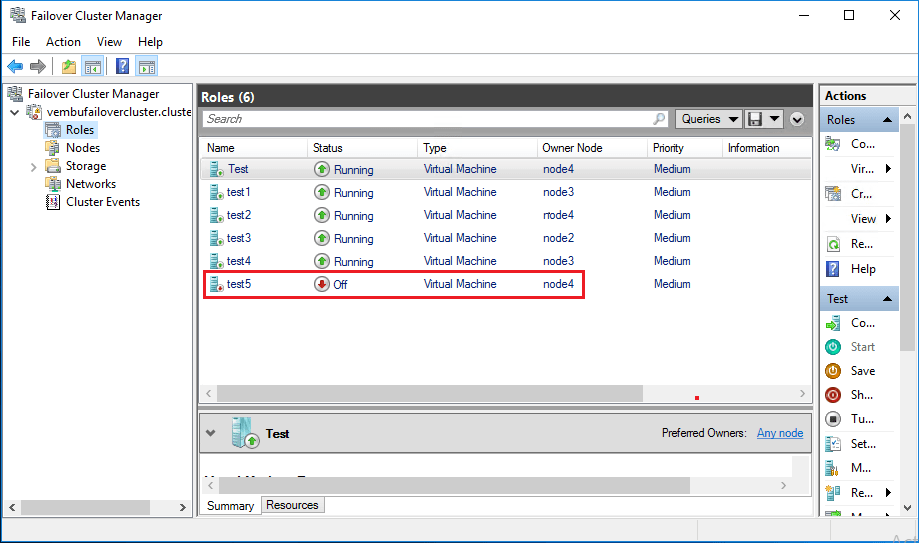
After turning the power ON in the VM, it is automatically moved to Node2 since Node4 Memory/CPU utilization is high compared to Node2. VMs are Load balancing between the nodes.
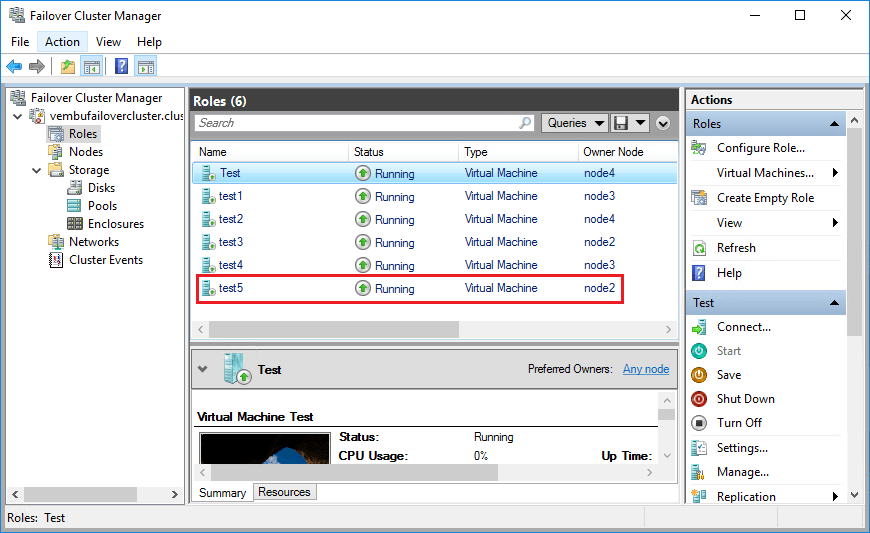
Conclusion:
Windows Virtual Machine Load Balancing is the new features included in Windows 2016 Server OS. It is used in Cluster failover setup and Virtual Machine Load Balancing is actually enabled by default. The VMs are migrated to another host without any downtime with the help of Load Balancing.
Got questions? Email us at: vembu-support@vembu.com for answers.
Follow our Twitter and Facebook feeds for new releases, updates, insightful posts and more.

